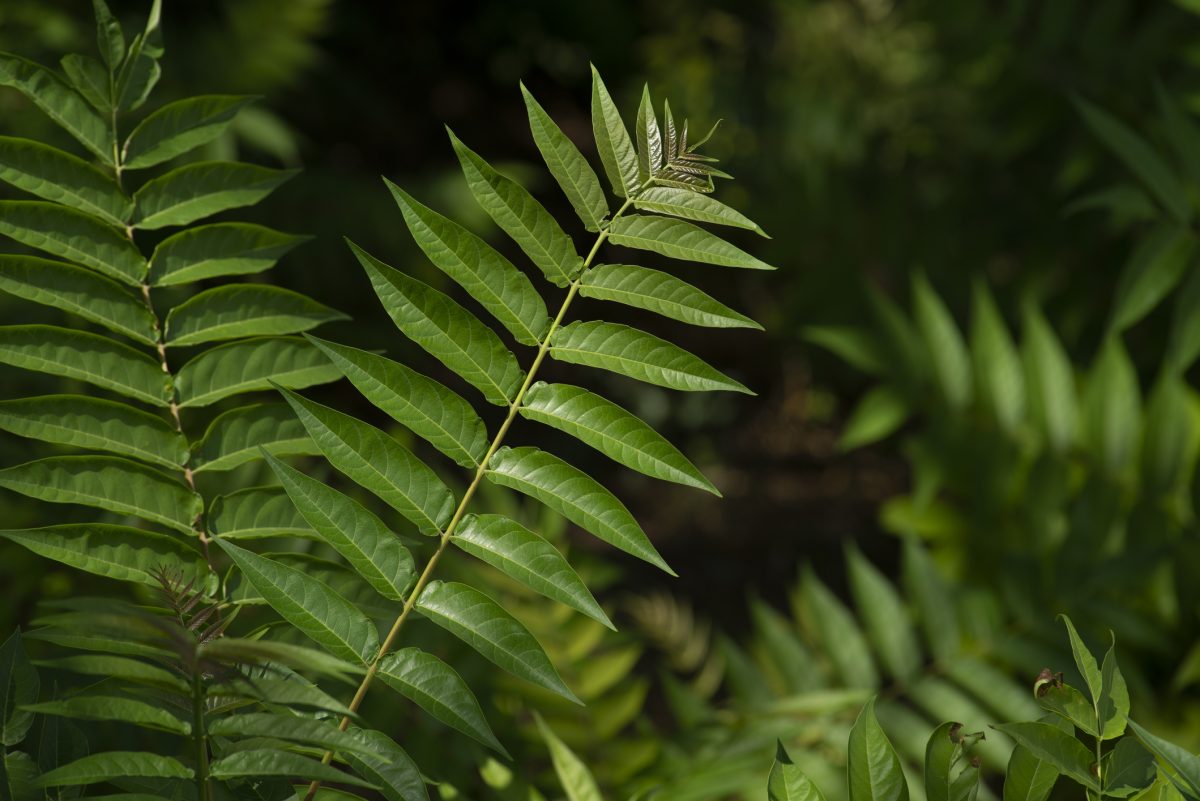Tree of Heaven
Tree-of-Heaven is an invasive tree species native to China that’s restricted in Ontario under the Invasive Species Act. It grows fast in most conditions, spreads quickly and crowds out native plants. The loss of native plants reduces the biodiversity of an area. This results in reduced ecosystem health and less resilience to environmental change.
It is also a preferred host plant for the adult Spotted Lanternfly, an invasive insect identified as an emerging threat to the forestry industry. The insect is not currently present in Canada.
While the Tree of Heaven isn’t planted on purpose in the City of Mississauga, its ability to thrive in tough urban conditions means it often appears in unwanted places, creating extra work for homeowners and City crews who have to keep removing new shoots from gardens, parks, and around fences and buildings.
What it looks like

| Form | A tree, 18 to 21 metres tall at maturity. |
|---|---|
| Habitat | Grows well in disturbed areas, often found alongside edges of woodlots and canopy gaps. It’s known to sprout out of cracks in the pavement. |
| Leaves | Leaves are clustered into 11 to 41 leaflets, with each having 1 to 2 rounded teeth at the base of each leaflet. Leaves emit a foul smell when crushed. |
| Flowers | Yellow-green and appear in the late spring. |
| Fruits and seeds | Flat and papery, clustered together, reddish-orange and turn brown by fall. |
| Bark | Grey, with long, thin, whitish streaks at maturity. |
| Additional characteristics | Trunk and branches of the tree are fragile and break easily, which may cause injury or damage to property and infrastructure. |
What we are doing
We’re taking a proactive approach to controlling Tree of Heaven in its natural areas, parkland and boulevards. As populations across the City are relatively low compared to other urban areas, we’re well positioned to practice early detection and rapid response to prevent its spread and establishment.
Trees will be planted in areas that meet the City’s planting criteria.
This approach follows the guidance of the Invasive Species Management Plan and aims to remove all trees that pose risk to the city’s natural areas and urban canopy.
How it spreads
Tree of Heaven spreads aggressively by seed and roots, which can sprout several new trees near the parent plant.
What you can do
Report Tree of Heaven plants found in City parks and natural areas.